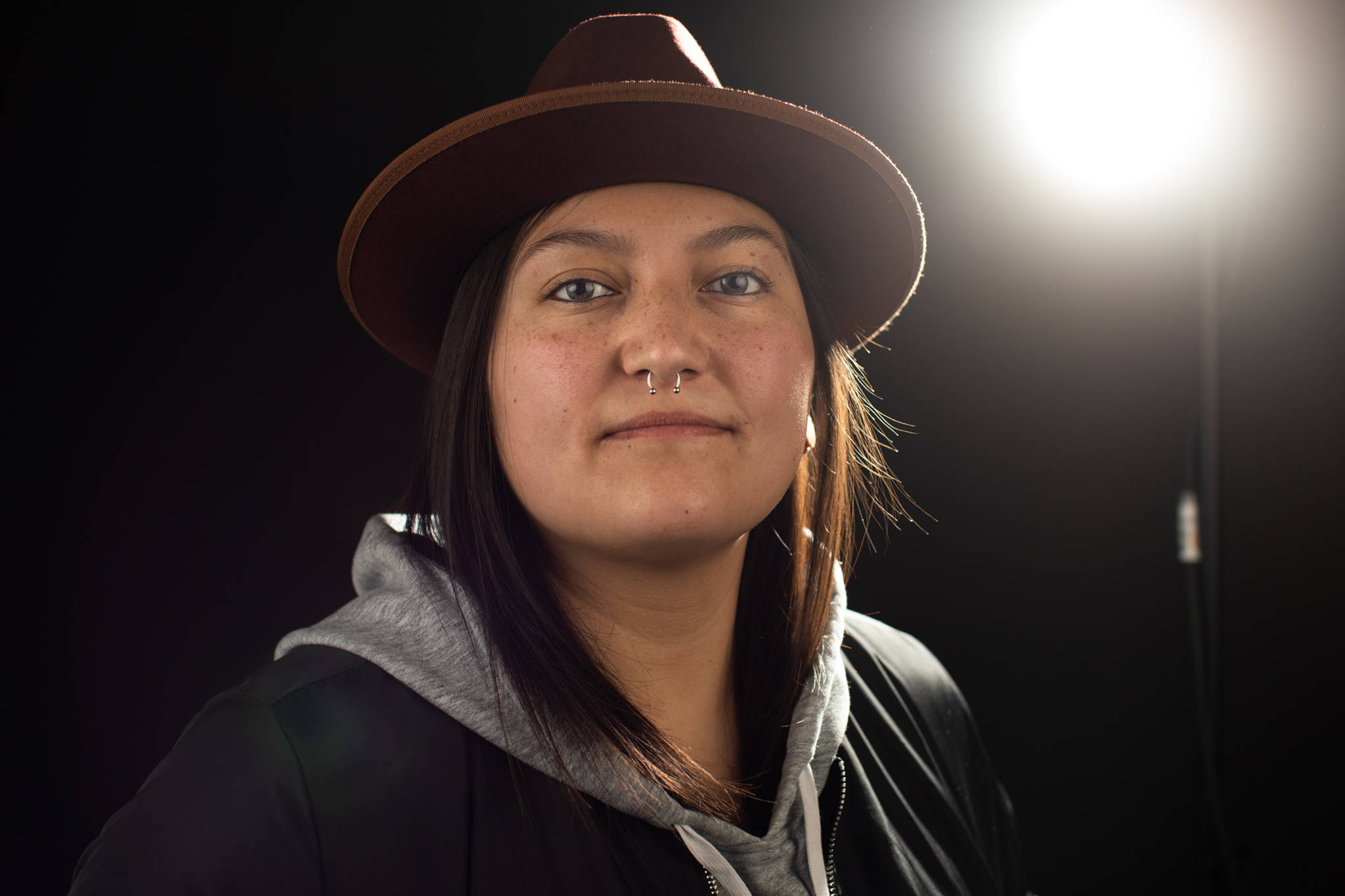Alexis Sallee wants more people to try to make art, and she hopes the new podcast she hosts will help people give themselves permission to do just that.
Sallee, who grew up in Anchorage and is Iñupiaq and Mexican, is one of the hosts of the recently launched “Native Artist” podcast. The new project — available on Apple Podcasts, Spotify, Google Play Music and Stitcher —spotlights the efforts of indigenous artists working in a broad spectrum of fields.
The podcast is put out under the banner of INDIGEFI, a weekly one-hour radio show featuring an eclectic blend of modern Indigenous music, that is hosted by Sallee.
Sallee said in a recent Zoom interview that she hopes the series emboldens people to try their hands at art — even in the absence of formal training or fully realized skills.
“I think we sometimes cut ourselves out before we give ourselves the chance to try it and do it,” Sallee said. “I just want to encourage people.”
Sallee, who is a filmmaker — she noted that she does not have a film degree — said she views the podcast as inviting conversations between artists. She said she especially hopes young people, who may recognize their own journeys in the artists’ stories, listen to the discussions.
The first season includes fashion designers, a painter, a carver, photographers and more.
Sallee said interviews are already completed with all the artists, and it’s been enriching to return to the conversations while getting them ready for people’s podcast feeds.
“It’s so interesting when you edit the content,” she said. “You revisit the conversation. There’s at least one takeaway from each conversation.”
[Podcast trend finds its footing in the capital city]
For example, Sallee said speaking with the people behind Ginew, a Native American-owned denim line, opened her eyes to the way well-crafted, long-lived clothes can reflect the personal stories of the wearer.
Other times the insight might be more personal.
She said carver Drew Michael’s episode delves into the role art played in his life as an Alaska Native artist from Bethel who grew up with white adoptive parents in Eagle River.
“He can look at all the masks he’s made and tell you where he was in his life,” Sallee said.
Sallee said care was taken to make sure the seven first season episodes cast a wide net and represent many indigenous cultures. There are more than 200 federally recognized tribes in Alaska alone and 573 across the U.S., according to the U.S. Bureau of Indian Affairs. Including the
The season, according to a news release announcing the show, features Tomas Karmelo Amaya, who is a Yoeme, A:shiwi and Raramuri director, writer and photographer; Tristan Morgan, who is an Iñupiaq painter; Michael, who is an Iñupiaq and Yup’ik carver; Erik Brodt and Amanda Bruegl of Ginew, who are collectively Oneida, Stockbridge-Munsee and Ojibwe; Laura Ortman, who is a White Mountain Apache composer, musician and installation artist; Kiliii Yuyan, who is a Nanai photographer; and Christopher Auchter, who is a Haida director, screenwriter and animator.
“We try to make it sort of broad culturally, but also broad artistically,” Sallee said.
• Contact Ben Hohenstatt at (907)308-4895 or bhohenstatt@juneauempire.com. Follow him on Twitter at @BenHohenstatt

